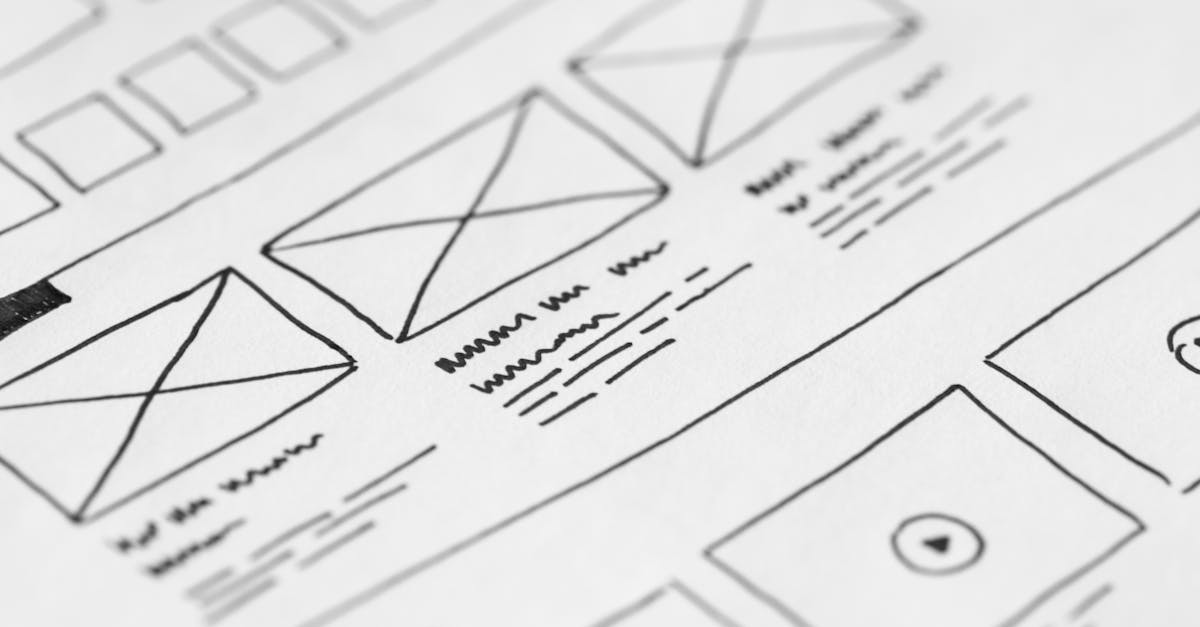
Website Design
Table Of Contents
Mailing Services Boston offers top-notch Website Design services to help businesses create visually appealing and user-friendly websites. Our experienced team of designers and developers works closely with clients to understand their specific needs and vision for their online presence. We focus on creating responsive websites that not only look great but also function smoothly across all devices. With a keen eye for detail and a commitment to customer satisfaction, Mailing Services Boston is dedicated to providing high-quality Website Design services that help businesses stand out in the digital world.
Utilizing SEO Best Practices
To ensure optimal visibility on search engines, it is crucial to incorporate SEO best practices into website design. By conducting thorough keyword research and strategically placing relevant keywords throughout the website content, you can significantly enhance your website's search engine ranking. Moreover, creating high-quality, original content that is both engaging for users and optimized for search engines is essential for driving organic traffic to your website.
In addition to keyword optimization, optimizing meta tags and descriptions is paramount in improving search engine visibility. Crafting compelling meta titles and descriptions that accurately reflect the content on each webpage can entice users to click on your website in search results. By adhering to these SEO best practices, you can enhance both the user experience and search engine ranking of your website.
Implementing Meta Tags and Keywords
Meta tags and keywords play a crucial role in optimizing a website's visibility on search engines. By strategically incorporating relevant keywords into meta tags, website owners can significantly improve their search engine rankings. Meta tags provide search engines with essential information about the content of a webpage, helping them understand the relevance and context of the page.
When implementing meta tags and keywords, it is essential to conduct thorough keyword research to identify the most relevant and high-performing terms in your industry. Including long-tail keywords and phrases can also attract more targeted traffic to your website. Additionally, meta descriptions should be compelling and accurately reflect the content of the page to entice users to click through from the search engine results page.
Integrating Social Media
When it comes to website design, integrating social media platforms is key to increasing user engagement and reach. Social media has become an integral part of people's daily lives, making it essential for businesses to have a strong presence across various platforms. By incorporating social media buttons and widgets on your website, you make it easy for visitors to share your content and connect with your brand on their preferred platforms.
Social sharing buttons are a simple yet effective way to encourage users to share your content with their friends and followers. These buttons allow visitors to easily post a link to your website or specific content on their social media profiles, exposing your brand to a wider audience. Additionally, integrating social media feeds directly onto your website can provide visitors with real-time updates and foster a sense of community around your brand.
Leveraging Social Sharing Buttons
Social sharing buttons are an essential component of any modern website design. These buttons provide visitors with a quick and easy way to share content they find interesting or valuable with their network. By strategically placing social sharing buttons throughout your website, you can encourage users to spread the word about your brand, products, or services, ultimately increasing your online visibility and reach.
When implementing social sharing buttons, it's crucial to consider the platforms where your target audience is most active. Whether it's Facebook, Twitter, LinkedIn, or other social media channels, customizing the buttons to suit the preferences of your users can enhance the likelihood of content being shared. Additionally, regularly monitoring the performance of these buttons through analytics can provide valuable insights into which platforms are driving the most engagement, allowing you to refine your social sharing strategy for optimal results.
Accessibility and Inclusivity
Creating a website that is accessible and inclusive is crucial in ensuring that all users, regardless of their abilities, can navigate and engage with the content. By following web accessibility guidelines, you can design a site that is user-friendly for individuals with disabilities, such as visual impairments, motor impairments, or cognitive disabilities. This may include implementing features like alt text for images, clear and organized headings, and descriptive link text to assist screen readers in conveying information effectively.
In addition to catering to users with disabilities, designing for inclusivity means considering a diverse range of users with varying needs and preferences. This involves creating a responsive design that adapts to different screen sizes and devices, ensuring that everyone can access your website seamlessly. By incorporating features like customizable font sizes, color contrast options, and intuitive navigation menus, you can enhance the user experience for all visitors, promoting inclusivity and user satisfaction.
Designing for All Users
Designing a website that caters to all users is essential in creating an inclusive online space. It is crucial to consider various factors such as user experience, accessibility features, and design elements that can accommodate individuals with different needs and preferences. By prioritizing inclusivity in website design, businesses can reach a wider audience and provide a seamless browsing experience for everyone.
When designing for all users, it is imperative to focus on functionality and usability. Ensuring that the website is easy to navigate and understand can greatly enhance the overall user experience. Incorporating features such as alt text for images, clear navigation menus, and adjustable font sizes can make the website more accessible to individuals with disabilities or those using assistive technologies. By embracing inclusivity in design, websites can become more user-friendly and welcoming to a diverse range of visitors.
FAQS
What are some SEO best practices to consider when designing a website?
When designing a website, it is important to implement SEO best practices such as optimizing page titles, using relevant keywords, creating quality content, and improving site speed to enhance search engine visibility.
How can meta tags and keywords be effectively utilized in website design?
Meta tags and keywords are essential components for improving search engine rankings. By strategically incorporating relevant keywords into meta tags and content, you can enhance the website's visibility and attract organic traffic.
Why is it important to integrate social media into website design?
Integrating social media into website design can help increase brand visibility, drive traffic to the site, and engage with users. By including social media buttons and sharing options, you can encourage visitors to interact with and share your content.
How can social sharing buttons benefit a website?
Social sharing buttons allow visitors to easily share website content on various social media platforms, increasing the site's reach and driving more traffic. By making it simple for users to share content, you can amplify your online presence and attract a wider audience.
Why is designing for accessibility and inclusivity crucial in website design?
Designing for accessibility and inclusivity ensures that all users, including those with disabilities, can access and navigate the website easily. By following accessibility guidelines and incorporating inclusive design principles, you can provide a better user experience for everyone.






